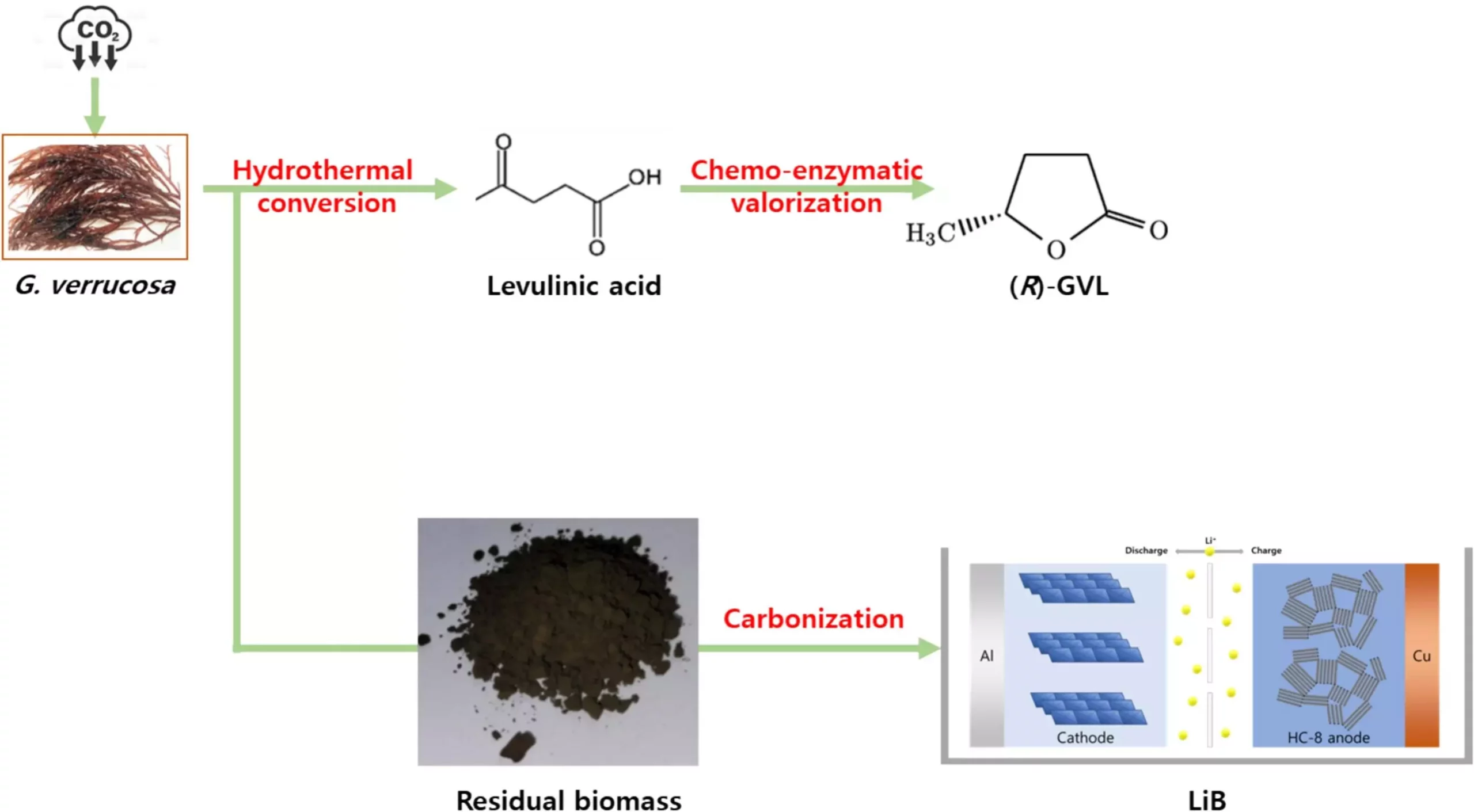The ongoing quest for sustainable energy solutions has led researchers to explore unconventional sources of biomass, particularly marine plants like seaweed. A recent breakthrough from a collaborative research team led by Dr. Kyoungseon Min at the Gwangju Clean Energy Research Center, alongside scientists from Kangwon National University, presents an innovative technological process that converts Kkosiraegi—commonly used in culinary practices—into valuable precursors for bio-aviation fuels and energy storage applications. Their findings, published in the Chemical Engineering Journal, underscore the potential of leveraging seaweed as an alternative to traditional fossil fuels.
The Promise of Bio-Aviation Fuel from Seaweed
Seaweed has been garnering increasing interest as a viable feedstock for bio-aviation fuels, primarily due to its substantial benefits in reducing greenhouse gas emissions. The study highlights that the application of bio-aviation fuel derived from this marine biomass could cut emissions by up to 82% compared to conventional aviation fuels. This promising statistic opens avenues for the eco-friendly aviation market, which is projected to capture approximately 35% of the entire aviation fuel market by 2070. Given this potential, the development of efficient production methods is crucial for the widespread adoption of bio-aviation fuels.
Currently, the most effective commercial methods, such as the sugar-to-jet technology, face notable challenges. These processes typically require complex pre-treatment, fermentable sugars, and high-pressure hydrogen, leading to elevated operational costs. Furthermore, they only yield about 15% of the fermentable sugars into useful precursors, necessitating enhanced efficiency to make bio-aviation fuels economically feasible.
In response to these challenges, Dr. Min and her research team devised a levulinic acid-based process that streamlines the conversion of seaweed into biofuel precursors. This novel technique involves a straightforward one-step enzymatic reaction rather than relying on the conventional microbial fermentation methods that have historically been employed. In this innovative approach, Kkosiraegi is treated with acid to convert it into levulinic acid. Subsequently, with the aid of an engineered enzyme developed by the research team, it further transforms into (R)-gamma-valerolactone [(R)-GVL].
A remarkable feature of this method is its efficiency. By utilizing this enzymatic approach, researchers can produce ten times more of the desired precursor from the same amount of biomass, significantly improving the economics of biofuel production. The optically pure (R)-GVL compound is not only a potential candidate for advanced bio-aviation fuels but also serves as a critical intermediate in biopharmaceuticals, opening new avenues for medicines addressing conditions like hypertension.
One of the key advancements presented in this research is the focus on enantioselective production, which is essential for maximizing the utility of (R)-GVL in various applications. Traditional methods often produce a mix of optical isomers [(R)- and (S)- forms], which can limit their applicability. The engineered enzyme developed by Dr. Min’s team has demonstrated remarkable efficacy, achieving over 99.999% accuracy in producing the (R)-GVL form exclusively. This high level of precision marks a crucial development, as previous technologies hampering the selective production of (R)-GVL have stifled its integration into fields such as biopharmaceuticals.
Utilizing Residual Biomass for Energy Storage
In addition to its implications for biofuels, the innovative process also effectively addresses the challenge of waste management. The remaining biomass from Kkosiraegi after levulinic acid production does not go to waste but is transformed into valuable anode materials for lithium-ion batteries through carbonization techniques. This dual-use strategy not only maximizes the utility of marine biomass but also promotes sustainability within the energy storage solutions sector.
The carbonized residue from Kkosiraegi was tested as a hard carbon material for lithium-ion batteries, yielding favorable results regarding capacity, lifespan, and performance. Such findings suggest that the valorization of by-products in this process could result in a new sustainable model for energy production and storage.
As the world faces the pressing challenge of climate change, the integration of marine biomass like seaweed into our energy and fuel systems presents a transformative opportunity. By advancing extraction and conversion technologies, researchers like Dr. Kyoungseon Min are paving the way for innovative solutions that not only enhance energy efficiency but also contribute to environmental regeneration. With Korea’s expansive coastline providing abundant seaweed resources, this technology showcases the country’s strategic advantage in leading the charge toward a sustainable energy future that cleverly utilizes the vast potential of marine ecosystems.


Leave a Reply